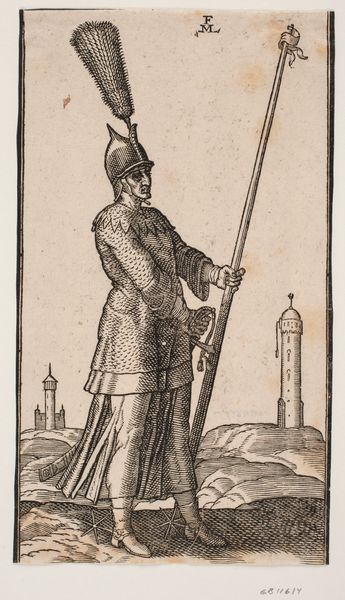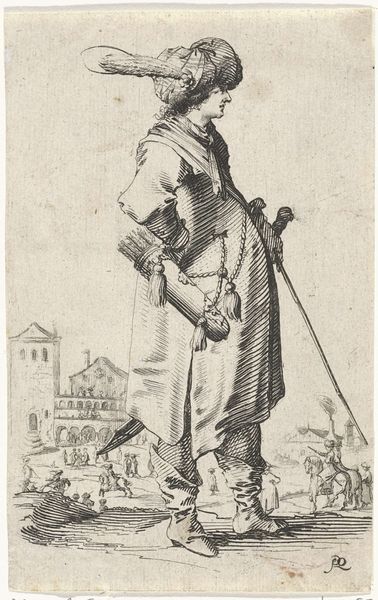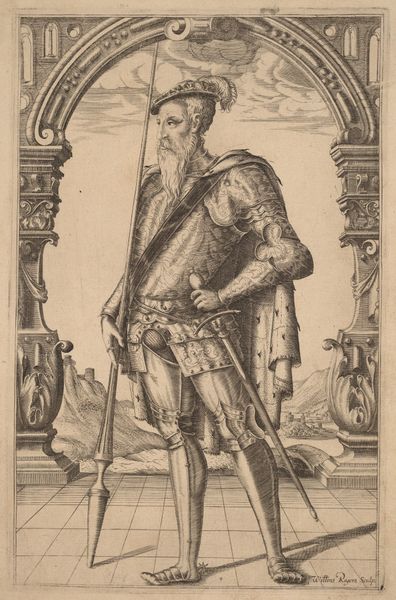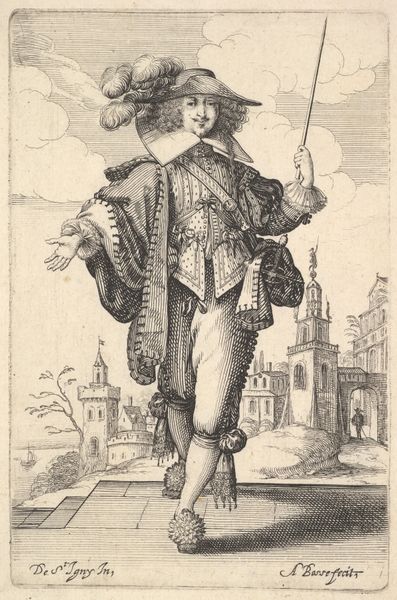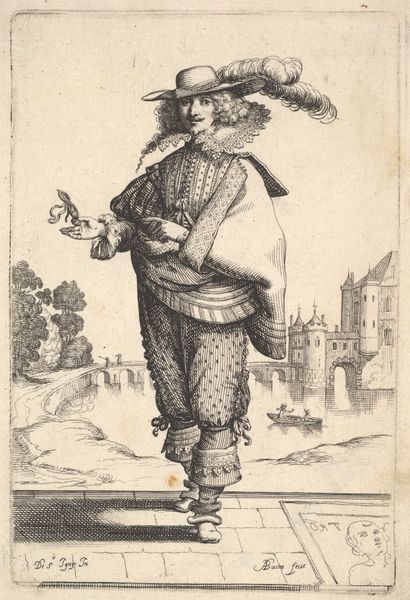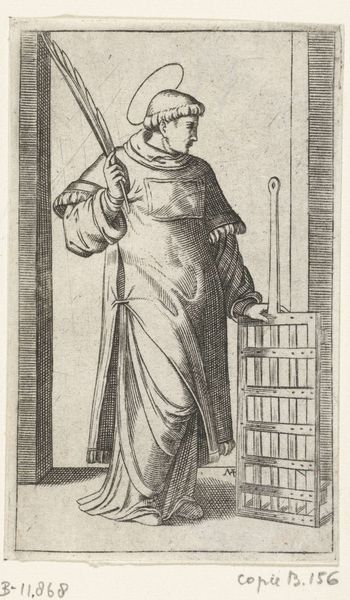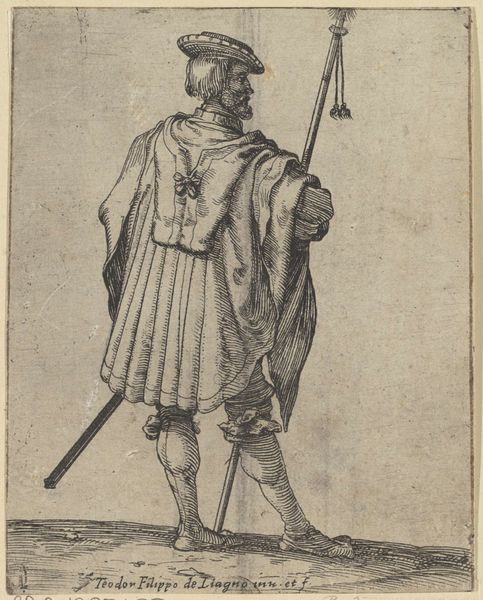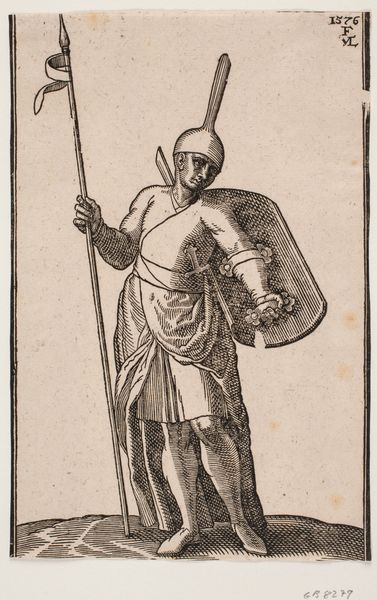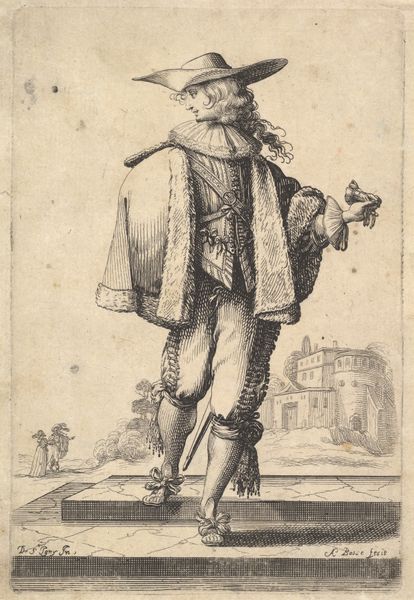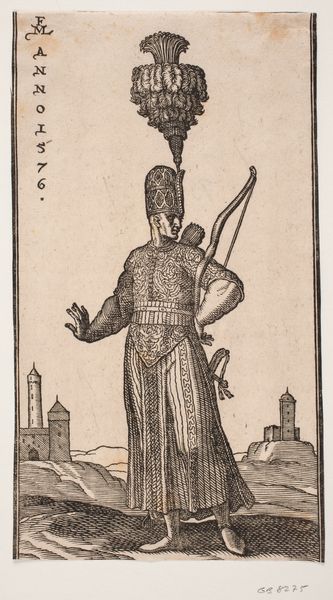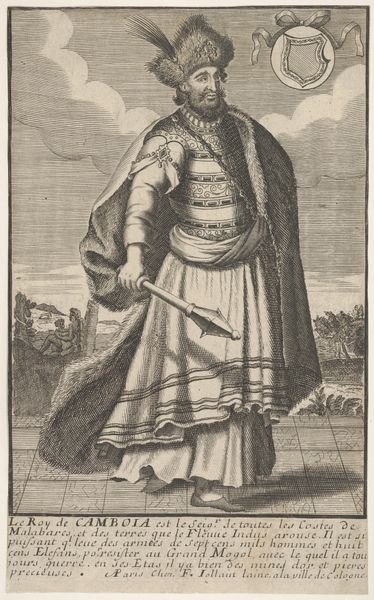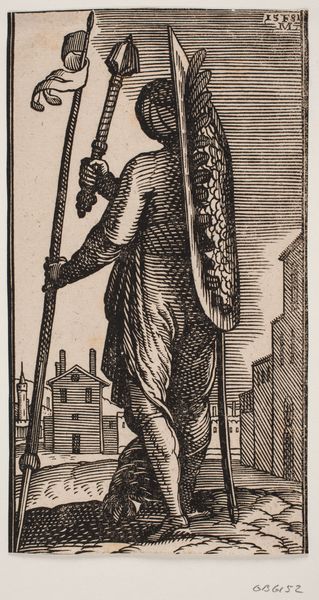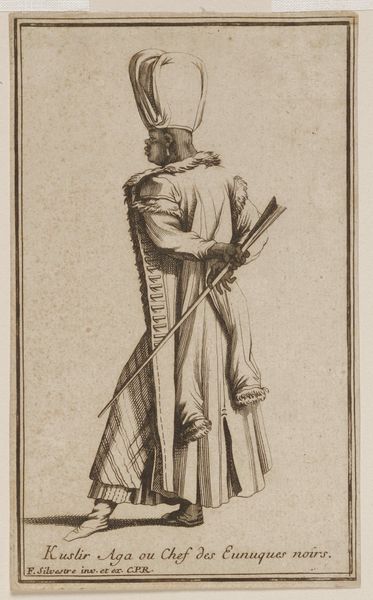
drawing, print, woodcut
#
portrait
#
drawing
# print
#
mannerism
#
woodcut
#
cityscape
#
islamic-art
#
northern-renaissance
Dimensions: 187 mm (height) x 132 mm (width) (bladmaal)
Curator: This striking image is titled "Elegant ung mand med turban og langt sjal," or "Elegant Young Man with Turban and Long Shawl," created in 1581 by Melchior Lorck. Editor: My immediate impression is one of deliberate contrast: the elegance of the figure set against what seems like a bustling cityscape, but all rendered in stark black and white. The weight of line and pattern creates an atmosphere of both sophistication and slight unease. Curator: The print medium is crucial here, it’s a woodcut, and that linearity you mention is very much a feature of that material process. Think of the labor involved in carving the block. Lorck wasn’t simply representing an image; he was engaging with a specific production practice that deeply influenced the final result. Editor: And the choice to depict this young man with Islamic symbols – the turban, the minaret in the background– suggests a symbolic interest in cultural exchange. It seems to ask the viewer to contemplate ideas of ‘the other,’ maybe even tolerance during a period of significant cultural tension. Curator: Indeed, Lorck was working in a period where there was enormous curiosity about other cultures and the visual arts were important in constructing those views. The man’s luxurious shawl suggests a prosperous trader, demonstrating how valuable such commercial exchanges could be to expanding European resources and power structures. Editor: Yet, he does seem isolated somehow, even vulnerable. I wonder if the long shawl draping around the body doesn’t offer him a protective guise or serve as a marker of foreignness, but ultimately exposes this cultural encounter to deeper scrutiny, questioning perceived exoticism. Curator: I agree; these Northern Renaissance prints weren't always celebratory. They often provided subtle, sometimes critical, commentary on social class, and the artist’s view of cultural commodities and how they change the material wealth of their society. Editor: Thank you. I found myself dwelling on the cultural signals embedded in the composition; I'm intrigued to learn the economic background adds greater depth to our understanding of the visual statement being made.
Comments
No comments
Be the first to comment and join the conversation on the ultimate creative platform.
